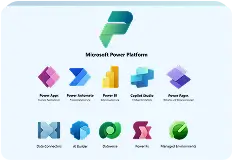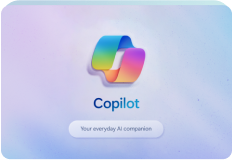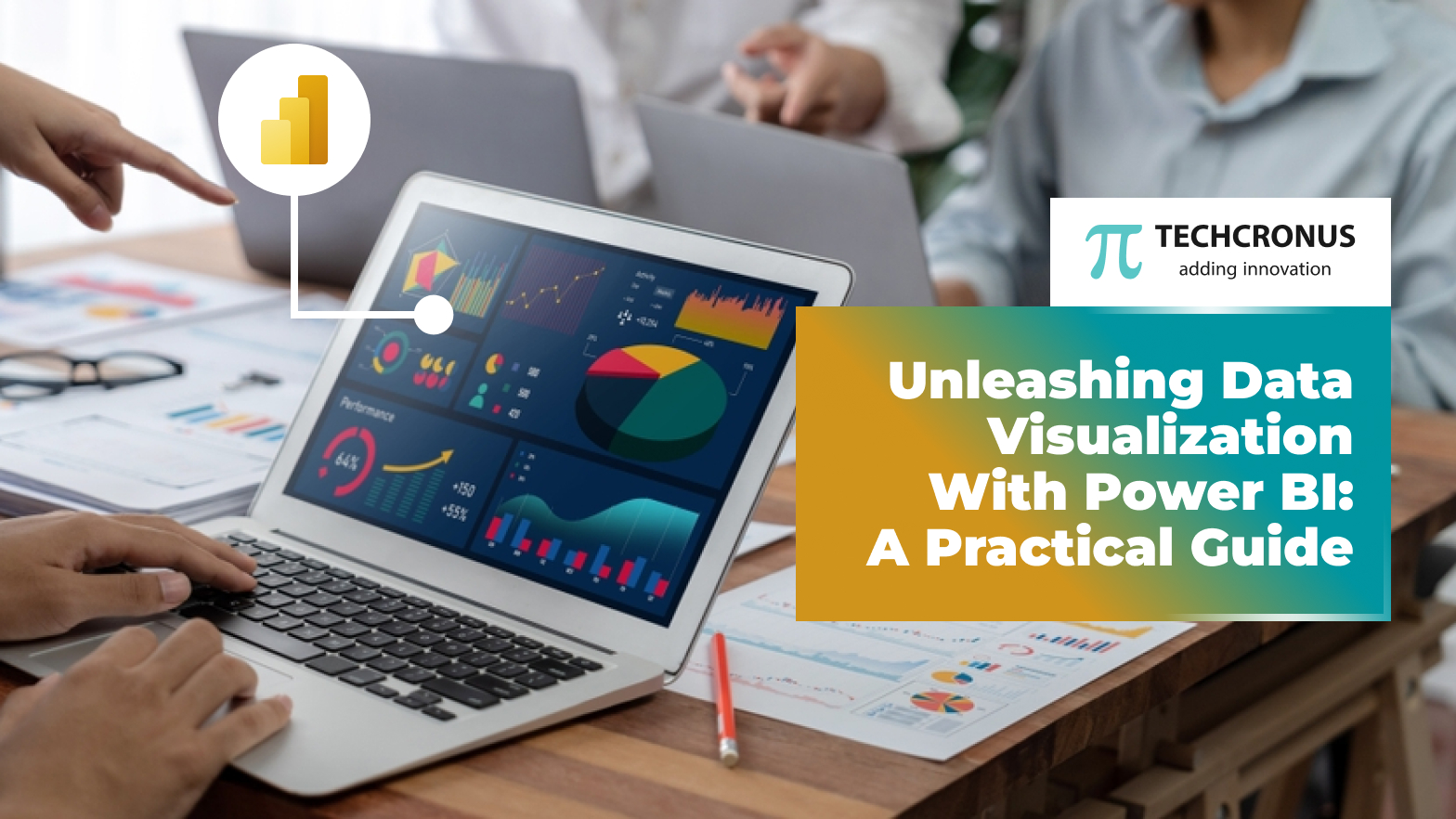Table of Contents
Are you having trouble making sense of the deluge of information at your disposal? Do static spreadsheets and dull charts make you long for a more engaging approach to visualize your results? There is no need to look any further! In this data-driven world, utilizing the power of Data Visualization with Power BI has become a game changer for businesses seeking to make informed decisions. Microsoft Power BI can help in this situation.
Developed by Microsoft, Power BI enables users to convert raw data into engaging and interactive visualizations. Whether you’re an experienced data analyst or a newcomer to data analytics, Power BI’s user-friendly interface and drag-and-drop functionality make it accessible to everyone.
With Power BI’s extensive range of data connectors, integrating data from various sources becomes a breeze, allowing you to uncover patterns, trends, and crucial insights. Real-time data analysis, cloud accessibility, and cross-platform support ensure you stay connected and informed, even when on the move.
If you’re ready to unlock the full potential of your data visualization journey, join us in this hands-on guide to “Unleashing Data Visualization with Power BI.” From installation to creating captivating dashboards and utilizing advanced analytics, we’ll provide you with the tools and knowledge to become a data visualization superhero. Let’s embark on this empowering journey together!
What is Power BI?
Power BI is a robust business analytics tool developed by Microsoft. It allows users to collect, transform, and visualize data from various sources, helping them create interactive and insightful reports and dashboards. With its user-friendly interface and diverse set of features, Power BI enables both beginners and experienced data analysts to derive valuable insights from their data, facilitating informed decision-making for businesses.
Why Choose Power BI for Data Visualization?
Ease of Use:
Power BI offers an intuitive interface suitable for both novices and experienced analysts. Its drag-and-drop feature enables easy visualization creation without requiring complex coding skills.
Data Connectivity:
The tool provides numerous connectors for diverse data sources, be it spreadsheets, cloud platforms, databases, or live-streaming data, ensuring seamless integration.
Interactive Visuals:
Power BI’s hallmark is interactivity, allowing users to explore and analyze data dynamically by filtering, slicing, and drilling down into details.
Real-Time Analysis:
For businesses reliant on real-time data, Power BI offers live data streaming, enabling swift decision-making by monitoring updates as they happen.
Cross-Platform Access:
Accessible via the Power BI Service and Mobile app, the tool supports viewing reports and dashboards on various devices, fostering collaboration and keeping stakeholders informed on the go.
Cloud Integration:
As part of the Microsoft ecosystem, Power BI easily integrates with Azure, Excel, SharePoint, and Teams, ensuring a cohesive data analytics experience.
Scalability:
From small-scale individual datasets to enterprise-level deployments, Power BI adjusts to accommodate diverse needs, ensuring consistent performance.
Rich Visualizations:
Offering a plethora of visualization types and customization options, users can choose from various visuals and tailor them to match branding or specific design requirements.
Natural Language Queries:
Utilizing natural language processing, Power BI allows users to ask questions in plain English, and receive relevant visualizations and insights, making data analysis accessible to non-technical users.
Data Security:
Emphasizing robust security features, Power BI ensures data encryption, access controls, and prevention measures for sensitive information.
Advanced Analytics:
Beyond visualization, Power BI integrates machine learning models and statistical functions, enabling deeper insights and predictive analysis.
Supportive Community:
Backed by an active user community, forums, and extensive knowledge resources, Power BI offers support and keeps users updated on the latest features and solutions.
Getting Started with Power BI
Installation and Setup:
Begin by downloading Power BI Desktop from Microsoft’s official website. After installation, log in using your Microsoft or Power BI account. Alternatively, there’s Power BI Service, a cloud-based version for sharing reports.
Connecting Data Sources:
Power BI offers multiple ways to connect data—import from files (Excel, CSV), databases (SQL Server, MySQL), or online services (Google Analytics, Salesforce). Once connected, tweak and model data as needed.
Data Transformation and Cleaning:
Cleaning and transforming data ensure accuracy. Power BI provides tools like merging and filtering to prep data for visualization.
Creating Visualizations:
Power BI excels in creating diverse visualizations—bar charts, line charts, pie charts, maps, tables, etc. Pick the one that best represents your data and effectively communicates your message.
Design and Formatting:
Aesthetics matter. Customize colors, fonts, backgrounds, and labels in Power BI to enhance user experience and data comprehension.
Building Interactive Dashboards:
Dashboards merge multiple visualizations. Add interactive elements like slicers and filters, enabling users to interact with and focus on specific data.
Implementing Advanced Analytics:
Leverage custom visuals and machine learning models in Power BI for deeper insights and predictive capabilities.
Publishing and Sharing:
Once done, publish your visualization to Power BI Service for wider access. Options include embedding it on a website, sharing a link, or collaborating with colleagues.
Best Practices for Effective Data Visualization with Power BI
Understanding Your Audience:
Before creating visualizations, know your audience’s needs and tailor insights accordingly to make data actionable for them.
Simplicity Matters:
Avoid clutter by presenting only crucial data points, eliminating distractions hindering comprehension.
Choosing the Right Visualization:
Select the appropriate chart type based on your data’s nature and the insights you aim to convey.
Consistent Color Schemes:
Maintain consistent and complementary color schemes across reports for a cohesive look.
Leveraging Visual Hierarchy:
Arrange visuals logically, highlighting critical insights through formatting and size.
Providing Context:
Clarify visualizations with clear titles and descriptions, aiding user comprehension.
Adding Interactivity:
Incorporate Power BI’s interactive features for user-driven exploration of data.
Using Labels and Annotations:
Strategically use labels for additional insight without overwhelming visuals.
Optimizing for Mobile Devices:
Ensure responsive designs for good user experiences on various screens.
Testing and Iterating:
Collect feedback and refine designs to enhance effectiveness.
Using White Space Wisely:
Utilize white space to reduce clutter and focus attention on key elements.
Avoiding Misleading Visuals:
Present data accurately and avoid visuals that may mislead without proper context.
Storytelling with Data:
Craft a narrative guiding audiences through insights step-by-step.
Regular Data Updates:
Schedule data refreshes to maintain reports with the latest information.
Securing Sharing and Collaboration:
Safeguard sensitive data when sharing reports by using Power BI’s security features for access control.
These practices help create impactful data visualizations in Power BI, enabling clearer communication of insights for informed decision-making and better business outcomes. Effective data visualization is about clarity and empowering audiences to confidently make data-driven decisions.
Conclusion:
In today’s data-driven landscape, Power BI stands as a transformative tool for businesses aiming to base decisions on solid data insights. By embracing the steps laid out in this guide, you can harness Power BI’s potential to convert raw data into engaging visualizations. These visuals have the power to captivate your audience, fostering deeper comprehension and informed decision-making.
It’s vital to recognize that effective data visualization transcends mere aesthetics. It’s about transforming intricate data into actionable insights that fuel business growth. So, embark on your data visualization journey with Power BI Developer —it opens up boundless possibilities for your organization’s success!






















